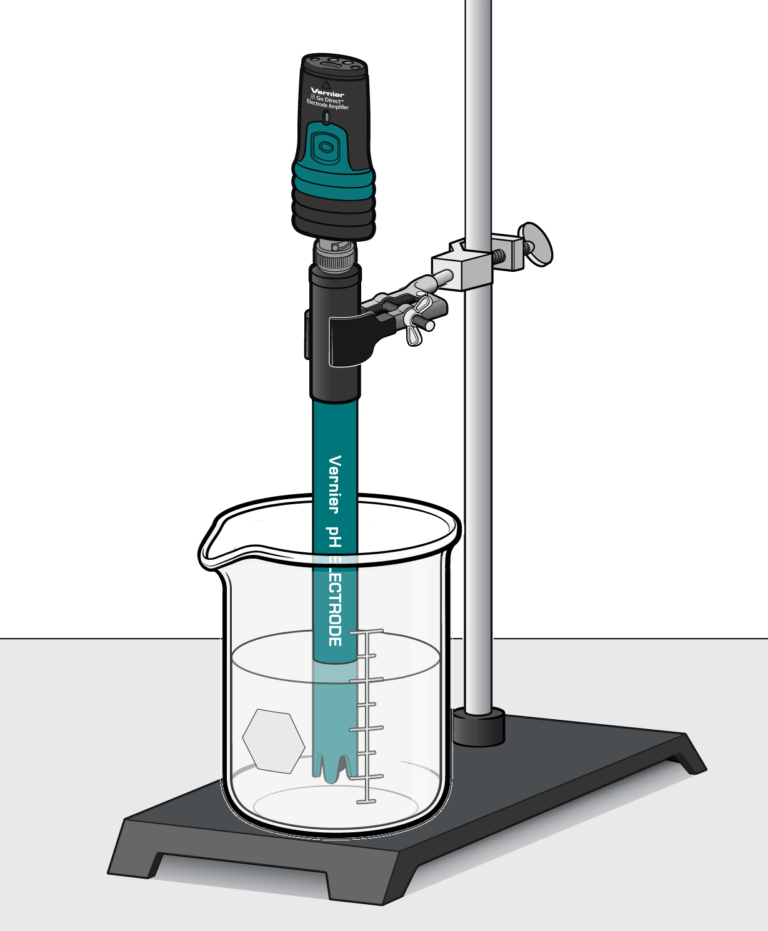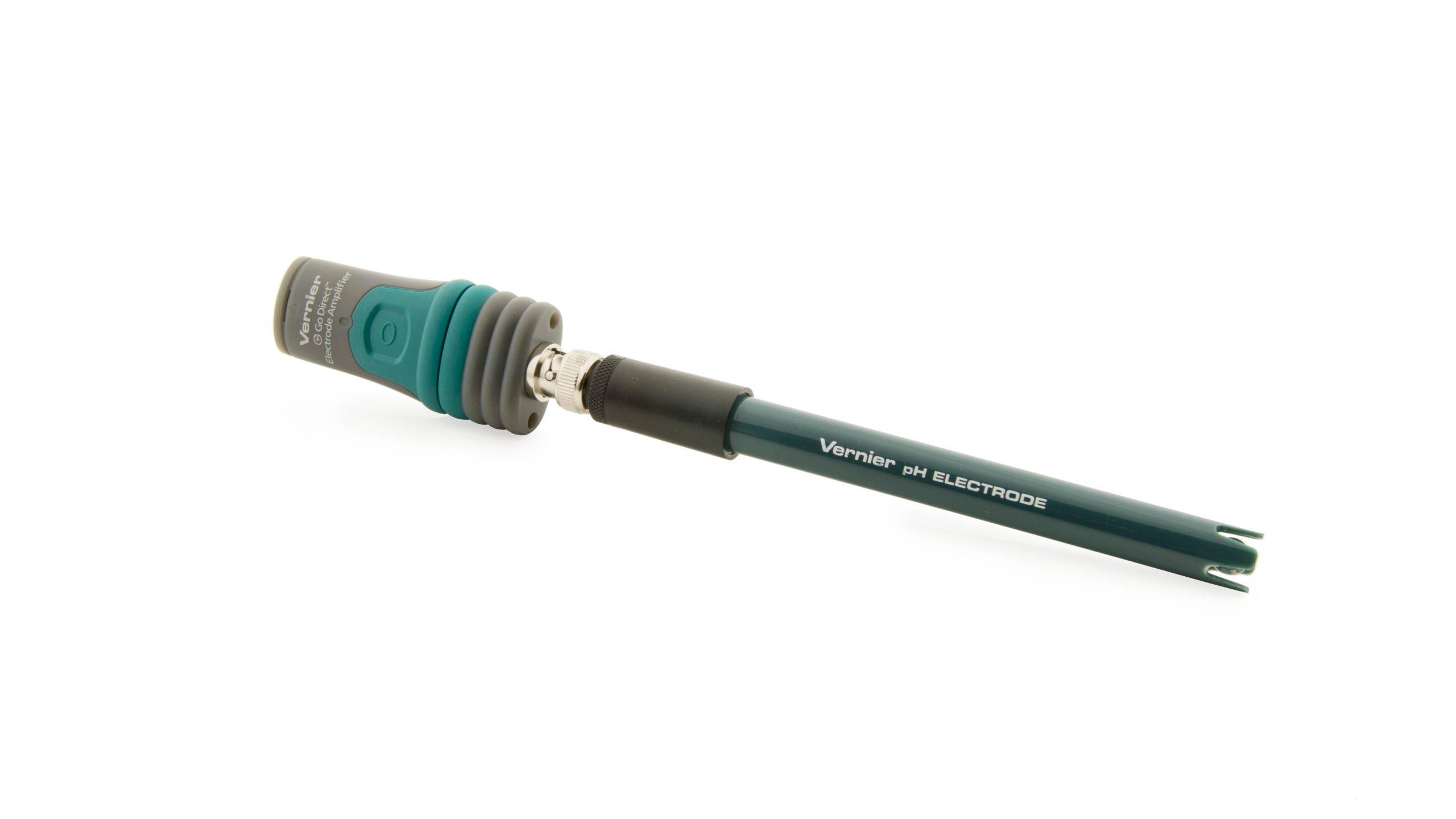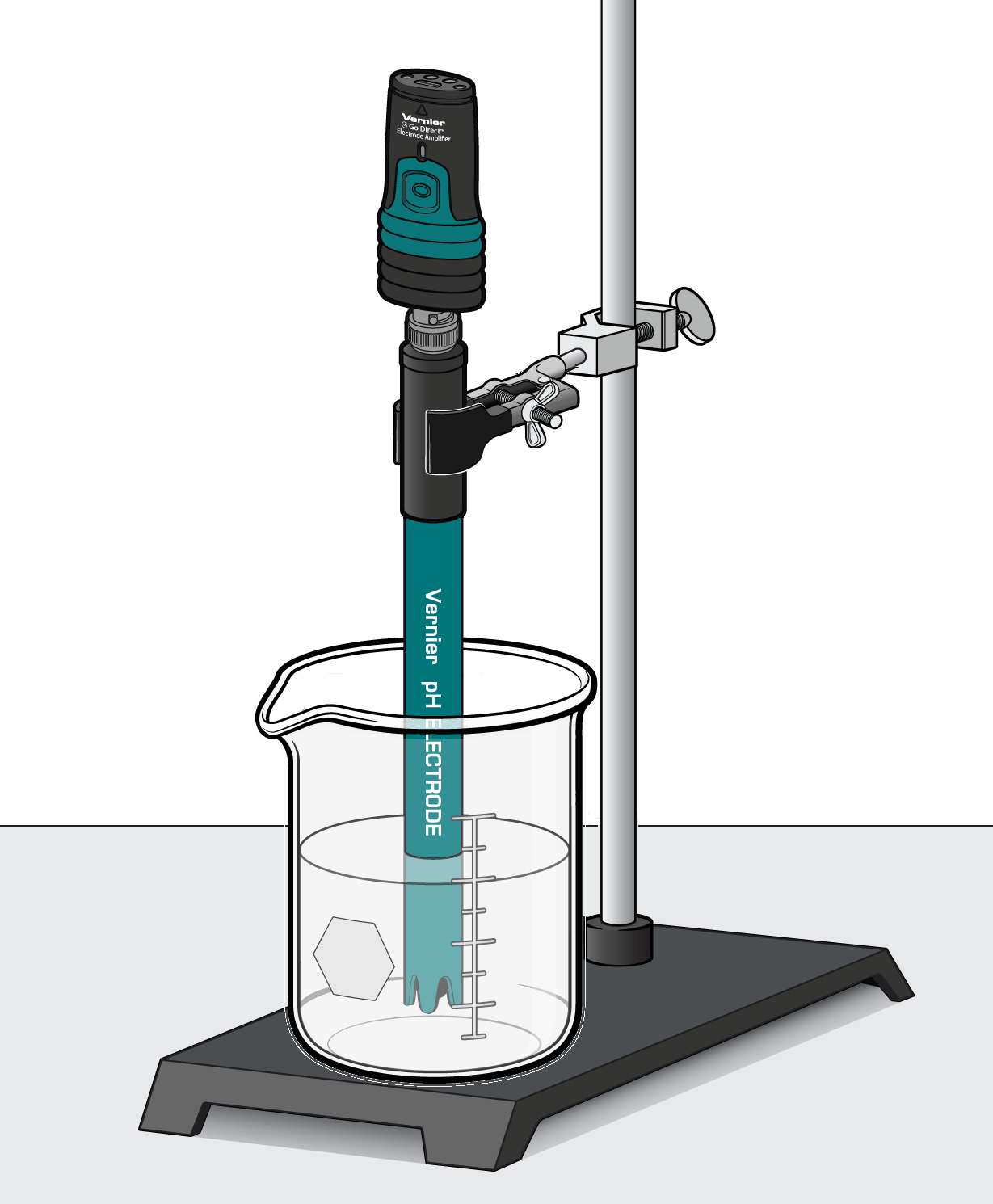Acid Rain and Its Effect on Surface Water
Experiment #16 from Earth Science with Vernier
- Subject
- Earth Science

Introduction
Acid rain can be very harmful to the environment. It can kill fish by lowering the pH of lakes and rivers. It can harm trees and plants by burning their leaves and depriving them of nutrients. It can also weather away stone buildings and monuments. But why is it more of a problem in some places than others?
To answer this question, let’s first look at how rain becomes acidic. Carbon dioxide (CO2) is a gas found naturally in the air. When CO2 dissolves into rain droplets, it produces a weak acid called carbonic acid, H2CO3. This makes rain slightly acidic naturally. Rain with a pH 5 to 6 is common and does not generally cause any problems. When fossil fuels are burned, however, gases such as sulfur dioxide (SO2) are released into the air. When sulfur dioxide dissolves into rain droplets, sulfuric acid, H2SO4, is formed. This rain can be as acidic as pH 4.
Acid rain is more harmful to some areas than others. This is because some water resists changes in pH better than others. Water that resists a change in pH is said to be buffered. Depending on the buffering capacity of the surface water, one area could be heavily damaged by acid rain that does not seem to harm another at all.
In Part I of this experiment, you will study how rain naturally becomes acidic due to CO2 in the air. You will monitor the pH of water as you add CO2 by blowing through a straw and determine the change in pH, ΔpH. In Part II, you will study the effect of acid rain has on the pH of different water types. The pH will be recorded as sulfuric acid is added dropwise to several different types of water.
Objectives
- Use a pH sensor to measure pH.
- Use a pH sensor to study the effect of dissolved CO2 on the pH of distilled water.
- Study the effect on pH of dissolving H2SO4 in various waters.
- Learn why some bodies of water are more vulnerable to acid rain than others.
Sensors and Equipment
This experiment features the following sensors and equipment. Additional equipment may be required.
Ready to Experiment?
Ask an Expert
Get answers to your questions about how to teach this experiment with our support team.
- Call toll-free: 888-837-6437
- Chat with Us
- Email support@vernier.com
Purchase the Lab Book
This experiment is #16 of Earth Science with Vernier. The experiment in the book includes student instructions as well as instructor information for set up, helpful hints, and sample graphs and data.



